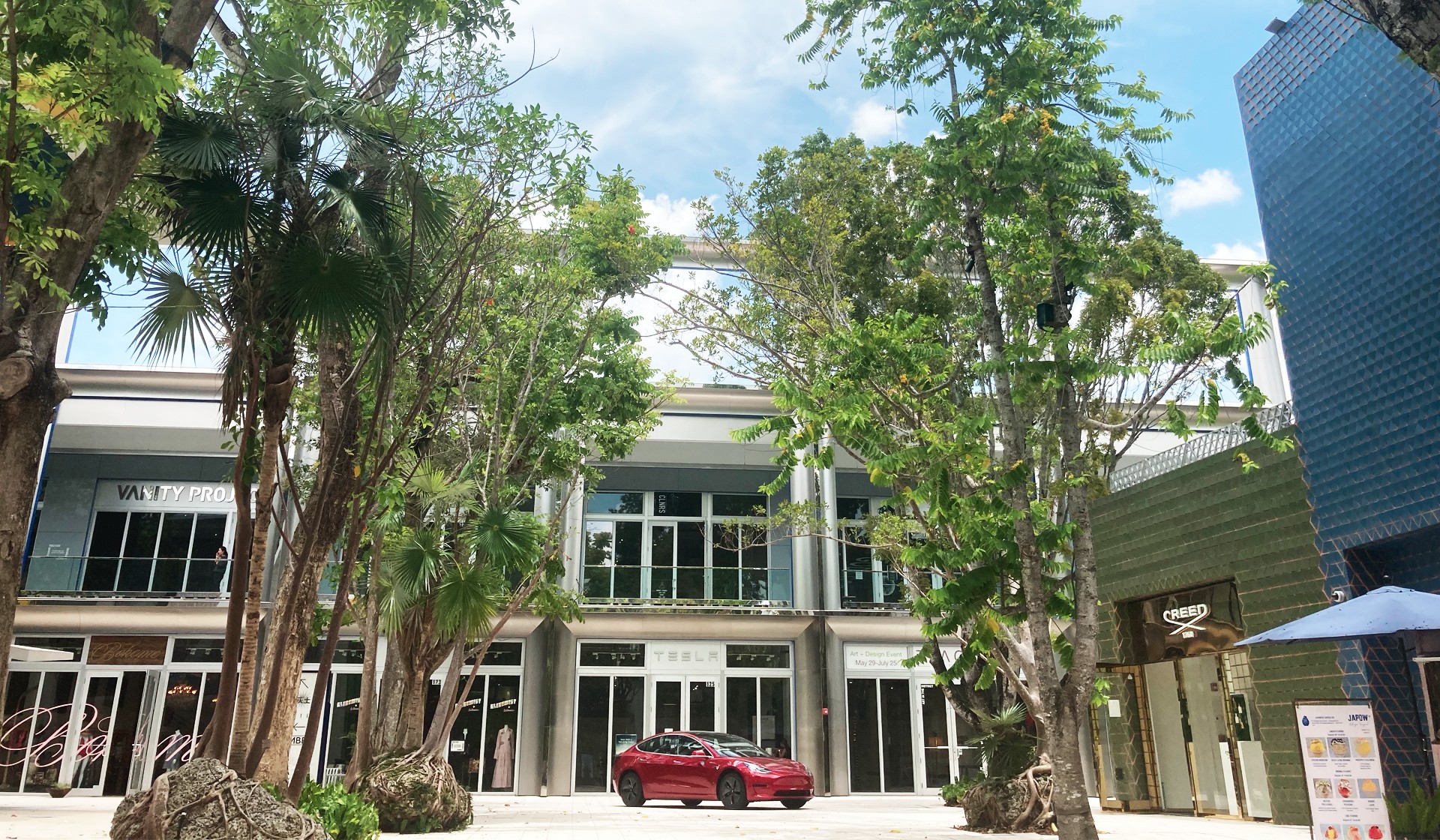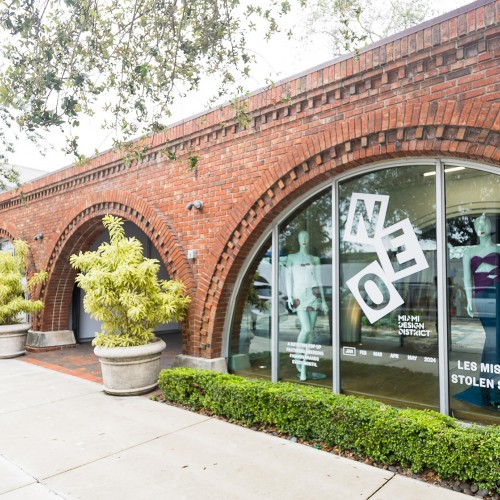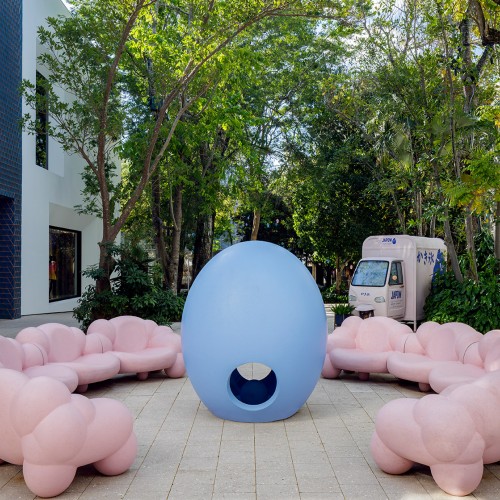“If the foliage looks like it’s always been there, then I’ve done my job,” says Nathan Browning, Miami Design District’s principal landscape artist and founder of The Island Planning Corporation.
Nathan and his team hand-selected each tree, flower, and vine for the Miami Design District with the direct intention of elevating the senses and the experiences of the guest. Many extraordinary narratives are woven into our landscape through its horticulture - and today we are going to explore just a few of the special stories that are hushed between the leaves of our neighborhood.
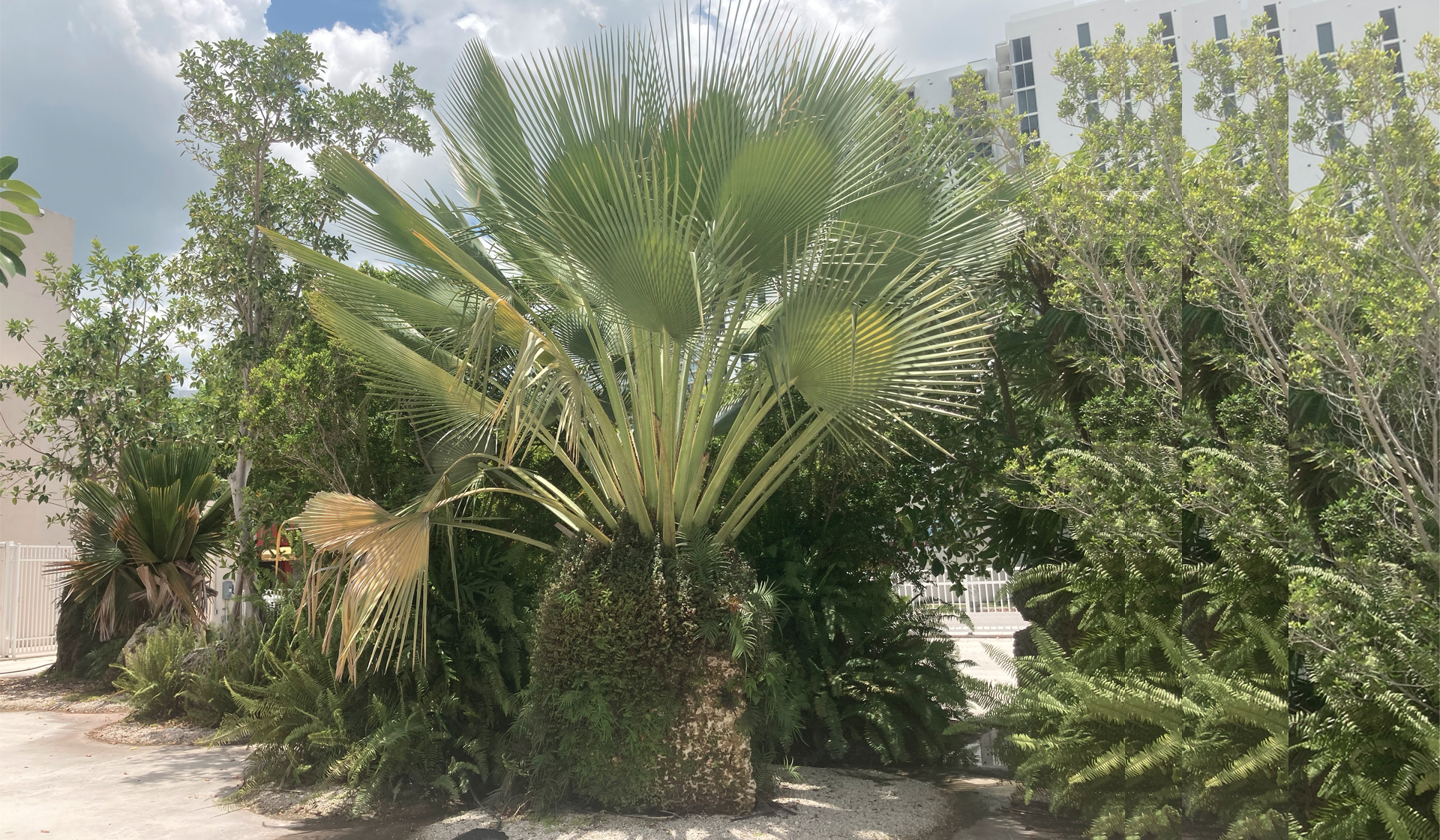
Oolite Stone. Center Palm: Copernecia gigas
To create an organic dialogue between art, nature, and space in Jungle Plaza, (home of famed design studio 2x4’s large-scale mural Jungle), The Island Planning Corporation had to think out of the box - so they created a natural one. Each one of the rare Caribbean palms that you see sprinkled in the plaza is rooted in five-feet layers of oolite stone.
“If you dug beneath the Miami Design District, this is the stone that you would find. It is the foundation rock of all of South Florida,” Nathan describes. “We chose these as the foundation for our palms because they are a highly absorbent stone and protect the root system of these plants. While each one weighs between 4-10 tons, they are also extremely sustainable, as they are sourced locally and can be moved as per the needs of those using the space. Around 80% of the plants that we use here are native to South Florida, but the Jungle Plaza palms are extremely rare Cuban species.”
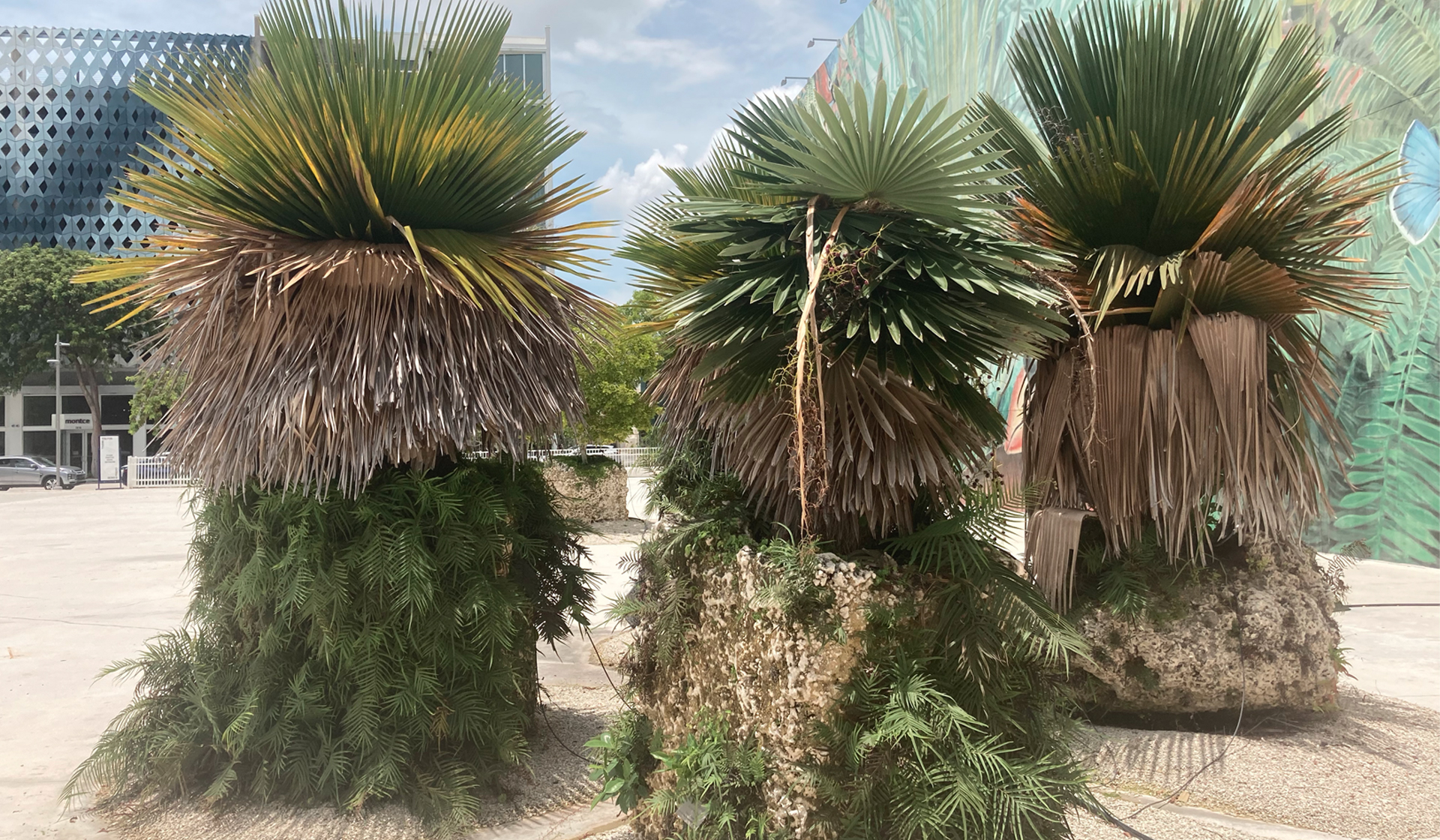
Coccothrinax borhidiana
These beautiful structures are the bridge between intentional horticulture and sculpture, art, and nature, which is the intention of their design.
The ease and beauty of the Oolite stones is replicated on the other end of the Miami Design District, in Paradise Plaza, but the plaza’s plant-based secret is higher than ground level—it is up in the trees. 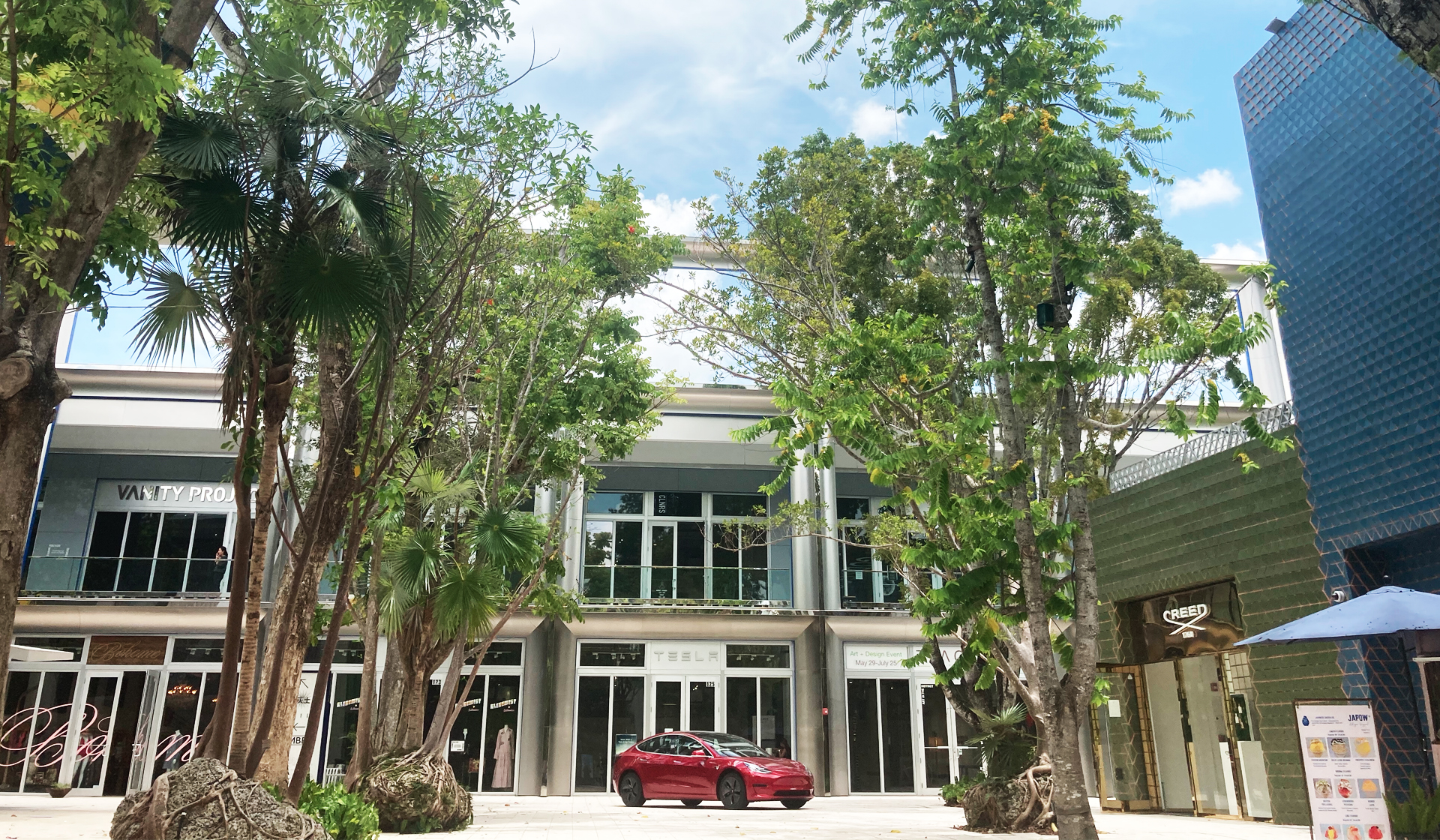
Planted among the oolite stones is Cananga odorata, known as the cananga tree, a tropical tree native to India that is the mother of the Ylang Ylang flower. The yellow flower gives off a remarkably sweet smell and its oils are harvested for the base of many famous perfumes—most notably Chanel #5.
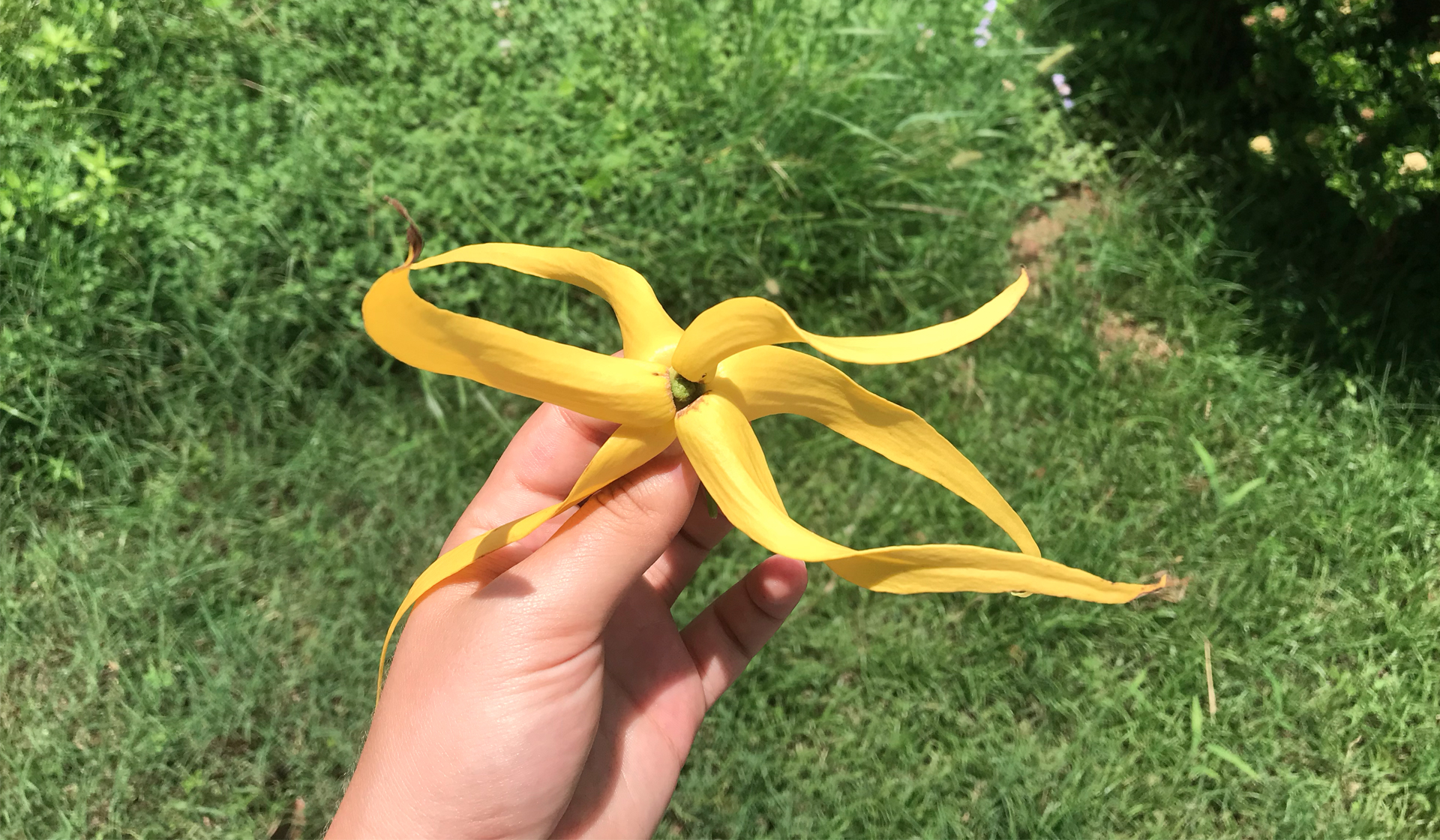
Ylang Ylang flower
If you visit the plaza in the evening, you will be able to smell its rich, sweet aroma permeating through the breeze. This incredible flower also blooms in the garden of Paradise Plaza Event Space and shares its sweet aroma with all those who visit the garden.
We will be sharing more behind-the-scenes of the Miami Design District’s intimate landscape and stories from the soil soon.

